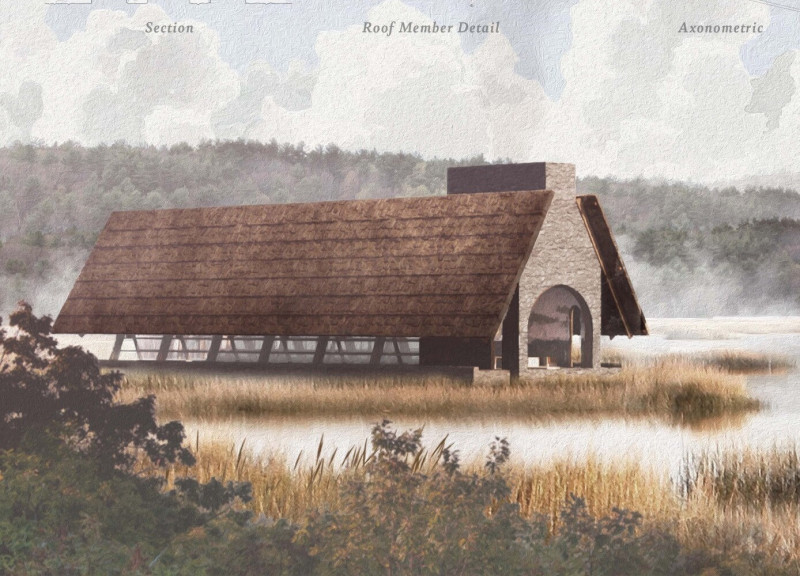5 key facts about this project
The architectural design incorporates a layout that prioritizes accessibility and ease of movement throughout the space. Central to this design is a carefully planned pathway that serves as the main circulation route, guiding residents and visitors from one area to the next. This central corridor is flanked by communal spaces that invite interaction, including lounges and multipurpose rooms designed for activities that encourage socialization. Accessibility is further enhanced through the use of thoughtful gradients and smooth transitions, ensuring that the needs of all residents, regardless of mobility level, are adequately met.
This project distinctly emphasizes the importance of natural light and its impact on well-being. Large, strategically positioned windows allow for an abundance of daylight to fill the interiors, creating a warm and welcoming atmosphere. The design seamlessly connects the interior with the surrounding landscape, involving views of gardens or water features that enhance the experience of living within this community. Balancing openness with the need for privacy, the architecture introduces semi-private spaces that provide quiet corners for residents seeking solitude or a moment for reflection.
Material selection plays a critical role in the overall design, reinforcing the focus on comfort and connection to nature. The use of wood, stone, and glass not only enhances the visual appeal but also contributes to the building's tactile qualities. Wooden elements provide warmth and familiarity, while stone offers durability and a sense of permanence. Glass is used extensively to dissolve barriers between indoor and outdoor living, ensuring that residents can appreciate their natural surroundings from the comfort of their homes.
Unique design approaches in this project manifest through its engagement with intergenerational dynamics. Spaces are intentionally designed to encourage interactions among different age groups, fostering a sense of community and shared purpose. Common areas are adaptable, supporting various activities such as workshops, classes, and social events, thereby establishing a vibrant hub within the architecture. This commitment to community-oriented design distinguishes the project, as it not only serves as a residence but also as a space for collective enrichment.
Moreover, the project thoughtfully considers sustainability through its design principles. By integrating natural materials and energy-efficient systems, the architecture minimizes environmental impact while enhancing the occupants' experience. This forward-thinking approach aligns with contemporary architectural trends that prioritize ecological considerations alongside comfort and aesthetic appeal.
As you explore the visual presentation of this project, you will find architectural plans that elucidate the relationship between different spaces, architectural sections that highlight the intricacies of the design, and architectural details that underscore its functionality. Engaging with these elements will provide deeper insights into the architectural ideas that inform the project. The interplay between design intent, materiality, and user experience encapsulates a commitment to creating a nurturing environment that encourages meaningful connections among its residents. For those interested in community-focused architecture, delving into this project will undoubtedly inspire a greater understanding of how thoughtful design can enhance daily living and foster lasting relationships.























